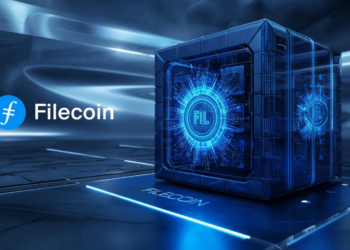Imagine a currency that’s always worth $1. Sounds great, right? But what if it suddenly loses its value and crashes? That’s the story of some algorithmic stablecoins, like what happened with Terra/LUNA. While some failed, people are still working on this idea. They believe it can change how money works online. So, what are these coins, and can they really work in the Web3 world?
Algorithmic stablecoins aim to be stable and decentralized. They try to avoid the problems of regular money. But they also have risks. If they don’t work right, they can lose all their value fast. Despite these risks, many believe they can be a big part of the future of finance. Their success depends on solving some big problems and making sure they are built to last.
Understanding Algorithmic Stablecoins
Let’s figure out what algorithmic stablecoins are all about. They’re different from other kinds of stablecoins.
What are Algorithmic Stablecoins?
Algorithmic stablecoins keep their value using computer programs and smart contracts. These programs automatically adjust the coin’s supply to keep its price stable. Unlike regular stablecoins, they don’t need to hold cash or other assets as backup. The algorithm is what keeps the price at $1.
There are several ways these algorithms work. Some use a system called seigniorage. This means the system creates or destroys coins to control the price. Others use a fractional-algorithmic approach. This combines algorithms with some collateral to add stability. Each method has its own advantages and disadvantages.
Algorithmic vs. Fiat-Collateralized and Crypto-Collateralized Stablecoins
Stablecoins come in a few types. Fiat-collateralized coins, like USDT and USDC, are backed by real-world money like U.S. dollars. Crypto-collateralized coins, such as DAI, use other cryptocurrencies as collateral. Algorithmic stablecoins are different. They don’t rely on any collateral.
Each type has different trade-offs. Fiat-backed coins are stable but centralized. Crypto-backed coins are more decentralized but can be unstable if the crypto used as collateral drops in value. Algorithmic coins aim for both decentralization and stability. But they’re the hardest to get right.
The Promise of Decentralization and Scalability
Algorithmic stablecoins could be very helpful for DeFi. They offer decentralization. Regular stablecoins are often controlled by a single company. Algorithmic coins can be run by a community, not just one group.
They can also be more scalable. Fiat-backed coins need to hold a lot of money in a bank. This can slow things down. Algorithmic coins can create new coins faster. This can help them grow more quickly.
The Challenges and Risks
Algorithmic stablecoins face some big problems. The “death spiral” is a big worry.
The “Death Spiral” and Loss of Peg
A “death spiral” happens when people lose faith in a stablecoin. The price starts to drop. As the price falls, more people sell. This makes the price drop even faster. The algorithm might try to fix it by creating more coins. But this can make things worse. If people don’t want the coins, creating more just lowers the value of each coin.
Several things can cause a death spiral. A big market crash can scare people. Bad news about the project can also cause panic. Once a death spiral starts, it’s very hard to stop.
Lack of Real-World Adoption
Most people and businesses don’t use algorithmic stablecoins. They’re not widely accepted. People are often worried about their stability. Many businesses don’t want to risk accepting a coin that could lose its value overnight.
Also, many people don’t understand how they work. Regular money is simple. You know it’s backed by a government. Algorithmic coins are more complicated. This makes people nervous.
Regulatory Uncertainty
Rules about algorithmic stablecoins are unclear. Governments around the world are still figuring out how to handle them. Some countries might ban them. Others might create strict rules. This uncertainty makes it hard for these projects to grow.
If regulations are too strict, it could kill innovation. If they’re too loose, it could put people at risk. Finding the right balance is a challenge.
Innovations and Solutions
People are working on ways to make algorithmic stablecoins better. These solutions could help fix some of the problems.
Over-Collateralization and Hybrid Models
One idea is to use over-collateralization. This means backing the stablecoin with more assets than its value. For example, a stablecoin worth $1 could be backed by $2 worth of other cryptocurrencies. This makes it more stable.
Another approach is hybrid models. These combine algorithms with some collateral. This way, the algorithm isn’t doing all the work. The collateral provides a safety net.
Improved Algorithmic Mechanisms
New algorithms are being developed. These new programs are more complex. They use better feedback loops to respond to changes in price. They also create better incentives to encourage people to hold the coin.
Some projects are testing these new algorithms. They hope to create stablecoins that are less likely to crash.
Risk Management and Auditing
Good risk management is key. Projects need to watch for problems early. They need to have plans in place to deal with crises. Security audits are also important. These audits check the smart contracts for weaknesses. They can help prevent attacks.
Regular audits can catch problems before they cause a death spiral.
Real-World Examples and Case Studies
Let’s look at some specific algorithmic stablecoins. We can learn from their successes and failures.
A Look at [Stablecoin Project A]
Let’s call one project Stablecoin Project A. It uses a unique algorithm to maintain its peg. Its market cap has been growing steadily. Its trading volume is also strong. However, it has faced some challenges. The peg has slipped a few times during periods of high volatility.
The team is working on improvements. They are adjusting the algorithm to make it more resilient. They are also working on building more community support.
Lessons Learned from Past Failures
The collapse of Terra/LUNA taught us a lot. It showed how quickly a death spiral can happen. It also showed the importance of community trust. Once people lose faith, it’s hard to get them back.
Other failed projects have taught similar lessons. We need better algorithms. We also need better risk management. And we need to build strong communities that trust the project.
The Future of Algorithmic Stablecoins in Web3
Algorithmic stablecoins could play a big role in Web3. But they need to overcome some hurdles.
Integration with DeFi Protocols
Algorithmic stablecoins can be used in DeFi lending platforms. They can also be used in decentralized exchanges (DEXs). This can make these platforms more efficient. It can also give users more options.
For example, a lending platform could use an algorithmic stablecoin for loans. This could make it easier for people to borrow and lend crypto. A DEX could use an algorithmic stablecoin as a trading pair. This could make it easier to trade different cryptocurrencies.
The Role of Governance and Community
Community governance is important. It lets people who hold the coin have a say in how the project is run. This can make the project more resilient. It can also make it more adaptable.
A strong community can help the project survive tough times. If people trust the project, they are more likely to stick with it during a crisis.
The Path to Mainstream Adoption
To get more people to use algorithmic stablecoins, they need to be more stable. Regulations need to be clearer. People also need to understand how they work. Education is key.
If you’re thinking about investing in algorithmic stablecoins, do your homework. Understand the risks. Don’t invest more than you can afford to lose.
Conclusion
Algorithmic stablecoins are an interesting experiment. They could change how we use money online. But they also come with big risks. Past failures have shown us what can go wrong. The future depends on solving these problems. We need better algorithms, stronger risk management, and clearer regulations. Stay informed. Be careful. The world of algorithmic stablecoins is still evolving.

























